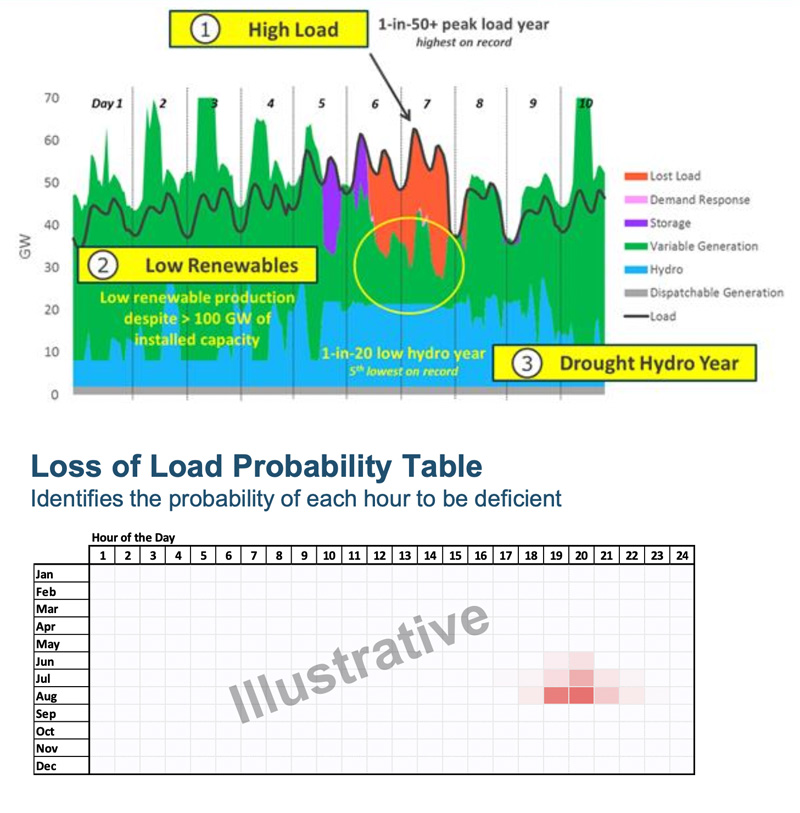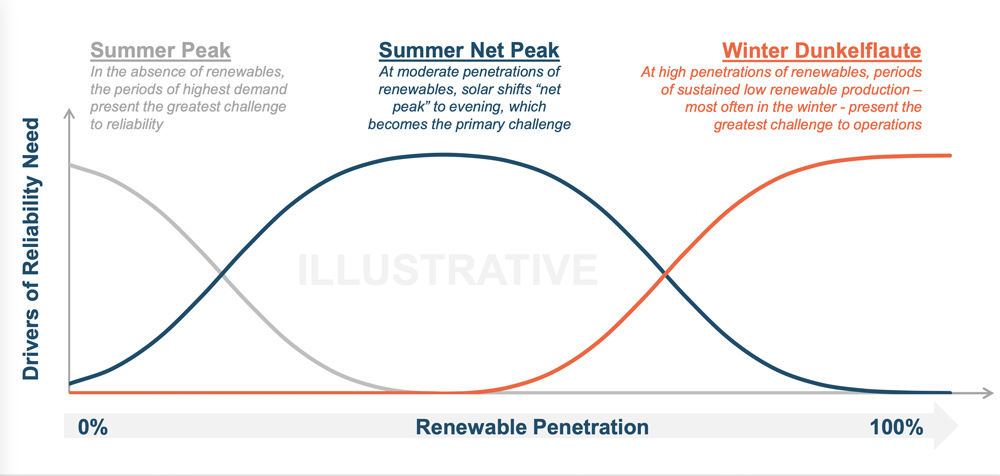Stakeholders on Monday discussed the methodology behind NYISO’s straw proposal on capacity accreditation as the grid and energy market adapt to an increasingly diverse resource mix.
The Installed Capacity/Market Issues Working Group spent nearly four hours discussing a study on Effective Load Carrying Capability (ELCC) by San Francisco-based consultancy Energy and Environmental Economics (E3).
“When we really were building up our resource adequacy capabilities it was a bit of a backwater… not many people knew what loss of load probability [LOLP] was and why most utilities do it,” said E3 senior partner Arne Olson. “But now after what we saw in Texas, I think we’ve seen that even these kinds of extreme events can really happen.” (See ‘Best Market in the World’ Faces Uncertain Future.)

Grid planning was relatively straightforward when RTOs only had to add up nameplate capacity to gauge resource adequacy, but now they must consider how the system as a whole is performing and all the interaction among solar, wind, batteries and hydro, Olson said.
“The total amount of effective capacity we have is a complex function of all of the individual generators and all of the ways that they interact throughout the year and during the hours when we might have a loss-of-load event,” Olson said. “So that’s why we have to use a technique like ELCC; it’s a way to help us deal with the changing resource mix.”
The firm last year co-authored a Net Zero New England study for Calpine and has been advising PJM on their capacity accreditation.
FERC rejected PJM’s proposed ELCC revisions in April, but on June 30 accepted a revised proposal minus the “transition mechanism” that the commission had found unjust and unreasonable. On the same day, PJM proposed a replacement for its extended minimum offer price rule (MOPR-Ex) as a tool for buyer-side mitigation (BSM). (See Mixed Stakeholder Reception to PJM MOPR Replacement.)
Modeling Basics
ELCC represents a percentage of the “perfect” capacity that a resource provides in meeting a target reliability metric (for example, 0.1 day/year loss of load expectation) and can also be thought of as the incremental load that can be met by an incremental resource throughout the year while maintaining the same target reliability metric.
“A lot of the dynamics that we tried to illustrate here are simplifications of what’s actually happening on the system,” said E3 Director Zach Ming. “The reality is, there is no difference between the diversity benefit or penalty and diminishing returns. Those are the exact same thing.”
Resources that are similar to each other have a negative diversity benefit, which creates the diminishing return, and resources that are different from one another interact positively with each other, he said.

The ISO’s Market Monitor, Potomac Economics, presented a paper supporting the study’s recommendation to calculate ELCC using a marginal approach. That approach entails using a reliability value of the next incremental supply of a resource type — or combination of resources — measured relative to an existing portfolio of resources, rather than taking the average value of the existing supply of the resource type.
With so many different types of capacity with different availability, it’s useful to have a concept that represents something they all can be compared to, but every type of capacity, including ‘perfect’ capacity, has diminishing returns, said Pallas LeeVanSchaick of Potomac Economics.
“E3 is highlighting that some of the resources have diminishing returns that diminish faster than perfect capacity, so they use perfect capacity as a benchmark for quantifying the diminishing returns of other resources,” LeeVanSchaick said.
Pairing Logic
Several stakeholders expressed concern about pairing the ISO’s efforts on capacity accreditation with buyer-side mitigation, the latter of which they believed could be handled relatively quickly. Tying the two together risks having FERC reject the BSM straw proposal because the commission has accepted ELCC proposals from three other RTOs/ISOs based on the average method of calculation rather than the marginal one.
“We do think that this effort is highly linked to our success with the buyer-side mitigation rule changes, and, in fact, we think there’s some tariff language that we absolutely need to modify if not replace and, in its place, put these rules that we’re talking about,” NYISO Director of Market Design Michael DeSocio said. “To the extent we have all of the rules figured out, we would do that, though I don’t think we will have them figured out because we are trying to move [BSM] forward as quickly as we can.”
DeSocio presented an overview of the PJM MOPR filing and said NYISO has been clear in its reasoning for a case supporting just and reasonable outcomes in the capacity market with large modifications to BSM.
“We do need it demonstrated that the capacity market remains competitive … and [an ELCC approach to capacity accreditation] is a large part of helping us to do that,” he said. “Separating them we don’t think is workable; in fact, we think it’ll be important to be very clear on how we intend at the highest level to treat capacity accreditation going forward so that we can properly perform those analyses and present that information as part of a whole framework.”


